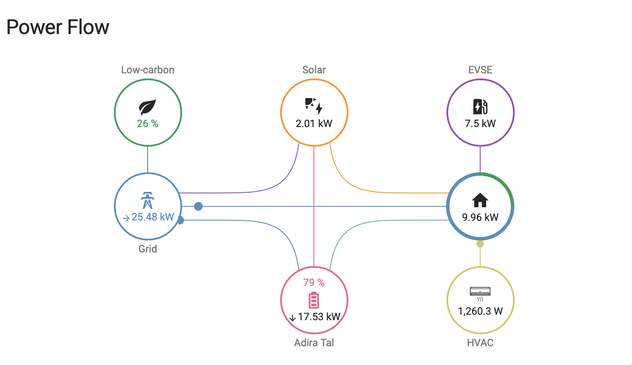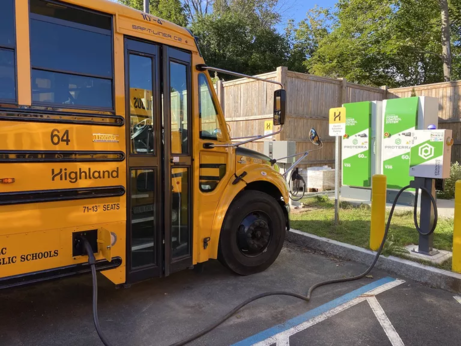Grid Batteries On Wheels: The Complicated Logistics Of Vehicle-Grid Integration
At its core, the concept of vehicle-grid integration (VGI) - also called Vehicle To Grid (V2G) - seems a simple one. Instead of a unidirectional charger for battery-electric vehicles (BEVs), a bidirectional charger would be used. This way, whenever the BEV is connected to such a charger, power could be withdrawn from the car's battery for use on the local electrical grid whenever there's demand.
Many of the complications with VGI have already been discussed, including the increased wear that this puts on a BEV's battery, the need for an inherently mobile machine to be plugged into a charger, and the risk of needing one's BEV and finding its battery to be nearly depleted. Here the cheerful marketing from Nissan and that from commercial initiatives such as Vehicle to Grid Britain makes it sound like it's a no-brainer once those pesky details can be worked out.
In parallel with the world of glossy marketing leaflets, researchers have been investigating VGI as a potential option for grid-level energy storage. These studies produce a far less optimistic picture that puts the entire concept of VGI into question.
The Demand Vs Supply Puzzle
In most VGI scenarios it is assumed that there are independent stakeholders, with the participation of the utility companies, VGI service providers, electric vehicle owners and possibly the government. When studying this scenario from a South Korean perspective, Moon et al. (2021) came to the conclusion that the economics of VGI are unlikely to work out without government subsidies. The essential problem is that with the overhead and logistics involved, it is exceedingly hard for any of the stakeholders to run a significant profit, if any at all.
What is fascinating about Moon et al.'s analysis is the description of the Korean energy market, which features both public utility companies as well as two tiers of demand response (DR). Korea's Type I DR applies mostly to larger industrial electricity users which receive incentives to reduce their load when asked to. This is a required response, with fines if the demand is not reduced when asked. Type I DR contracts have a maximum number of hours and number of calls.
VGI stakeholders’ benefit/cost ratio without government subsidies. (Moon et al., 2021)
Type II DR is a demand-side bidding program involving interested parties submitting load reduction offers. Here too, penalties apply if the requested demand is not reduced as offered. Parties can participate in both Type I and Type II DR, but Type I takes precedence over the latter. In many ways this DR system can be considered to be a kind of negative load-following, as well as peak-shaving system. The main difference is that instead of the utilities adding more supply to the system, demand is time-shifted or reduced.
In Moon et al.'s analysis, when considering VGI in the context of this system, it is exceedingly hard for the stakeholders to break even. Increased participation in the VGI scheme through a pooled VGI service provider improves matters, but a guarantee of profit is impossible to give for the VGI service provider without government subsidies. Perhaps ironically, there's also an increased chance of profitability the when the cars involved are used less often as cars. This notion has some led to consider an alternate take on VGI, using the swappable battery systems which are already in use in some places.
Herding Batteries
Although it is very much true that cars spend a large part of the time standing around, even in the case of BEVs, this is unlikely to always be in a location where they are continuously plugged into a charger, let alone a VGI-style bidirectional type charger. Many people will have their BEV out on the driveway, or parked alongside the road. But if you pull the battery out of the car when parked, you end up with something like a battery swapping station (BSS) that also provides grid-level storage services, as proposed by Zeng et al. (2020).
The convenient aspect of such a swapping-based system is that each BSS can maintain a pool of batteries, using the majority of these batteries fully for grid-balancing, while keeping a number of fully charged batteries ready for insertion into an EV. The mostly discharged battery from this EV is then added to the pool.
Battery Swapping Station workflow. (Zeng et al., 2020)
While avoiding the issues with BEV usage patterns, including their essentially random connecting to and disconnecting from the grid, the obvious issue with a BSS-centric system is that very few electric vehicles feature a swappable battery. To this day, it is a feature that is most commonly seen with e.g. taxis in countries like Japan and China.
Basically A Daft Idea
That VGI keeps receiving so much attention is rather astounding in light of the messaging from experts, such as J.B. Straubel did in 2016, back when he served as Tesla's CTO. As covered back then by CleanTechnica, J.B. makes it clear that only 'smart' dynamic charging -- charging mostly when demand wanes -- makes sense. J.B. also shot down of the notion that old BEV batteries can be reused for grid-level storage, noting the very different charge/discharge cycle requirements for a BEV battery versus that of a grid-level storage battery.
Dynamic charging should be easier to get BEV owners to sign up for. Charge rate is most important when traveling and stopping to recharge. When charging overnight, the only important aspect is whether the battery is full when getting into the car the next morning.
All of this seems to point back to the same issue: the conflict between trying to use the same battery for two diametrically opposite use cases. A BEV owner, when left to their own devices, has no interest in feeding power back into the grid, other than perhaps to their own home in the case of a power failure. This then leaves a financial incentive as the only reason for a BEV owner to participate in a V2G scheme.
Yet the most profitable way to benefit from a V2G scheme is to leave one's car hooked up to a charger 24/7 and not use it as a car. At that point, however, you're just buying the batteries. All of which serves to underline the reasons why V2G has such trouble making a solid business case, and instead keeps fumbling from trial to trial.
Smart Charging UPS-On-Wheels
When taking the available evidence into account, the case is easy to make that for utility and grid providers, the 'smart charging' and demand response aspects are both attractive and easy to justify. Much like with the large-scale DR schemes in South Korea, consumers might be enticed to let the utility regulate the charging speed of their BEV, especially for some compensation. For utilities, this could help with smoothing out the glut of demand that would occur when people arrive home after work, plug in their BEV charger, and turn on the airconditioning on full blast.
For BEV owners, the bidirectional charger makes some sense when it means that in the case of a power failure, the idling BEV in the garage could safely feed the power in its batteries into the house grid. This is a feature that is gradually becoming more advertised in advertisements for new BEVs. Unlike the uncertain prospect of selling BEV charging and discharging cycles to the local utility, using one's BEV as a fancy alternative to an emergency power generator makes intuitive sense.
VGI may just not be the panacea for grid-level storage that some made it out to be. Although BEVs can perform simpler tasks like grid frequency stabilization relatively well since these tasks require a relatively small battery, it could be argued that installing a dedicated battery in the grid is more economical than hoping that enough people plug in their BEVs at the right times to keep the grid from desynchronizing and plunging part of the nation in darkness, not unlike what happened with the Northeast blackout of 2003.
With how complicated a national grid is to begin with it, it's perhaps for the best that we do not seek to somehow integrate anything with a battery into it, especially when said battery can literally drive off at any moment.
#carhacks #featured #greenhacks #originalart #science #v2g #vehiclegridintegration #vehicletogrid #vgi

